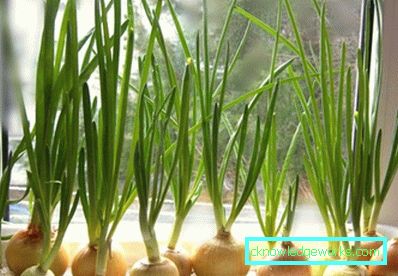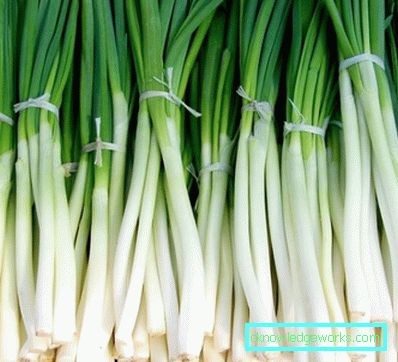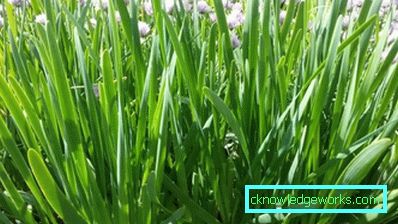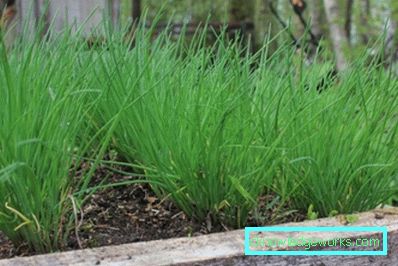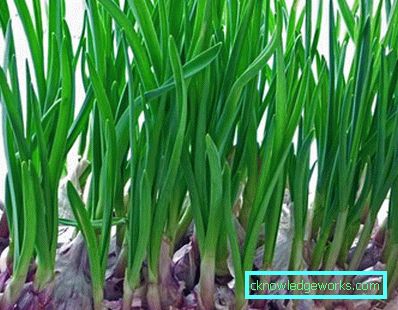Growing onions on a feather

The best varieties of onions for growing on a feather
To begin, consider in detail what kind of onion is best to grow to get a good green. Today there are several such varieties, each of which has its own characteristics. Absolutely all varieties of onions can successfully grow both in open ground and in the greenhouse or at home.

The most delicious is considered to be such a variety as onion-slizun. Oddly enough, the green feathers of this plant are characterized by a faint taste of garlic, which gives the onion a special piquancy. At the same time the greens do not have a pronounced garlic smell. It is this onion that contains the most iron and vitamin C. The variety is characterized by wide green feathers.
It is possible to grow onion slizun all year round at home or in a greenhouse. But when planting in open ground onions will grow until the first frost, and then stop developing. Many summer residents to extend the life of the bulbs simply transplant them in pots and continue to grow onions on the pen at home.

Leek and bamboos do not have a characteristic bulb. They are grown exclusively for the production of greenery. Leek, moreover, is more valued for the white stem, which has much more vitamins than green leaves. To taste, this stalk is practically no different from greenery. On the contrary, it has a pleasant sweetish flavor that many gourmets like. Onion-batun usually gives a harvest of greens only 1 time per season. But the leaves grow very long and wide.

The most unpretentious is Egyptian or multi-tiered bow. It can be grown in any conditions. Such a bow, even in the cold, does not freeze out and continues to give thick greens. Harvest can be collected year-round, as with proper care, feathers grow very quickly.
Shallots and chives are the most suitable varieties for gardeners who want to regularly receive a large crop of greens. In chives, greens are very delicate and fragrant, feathers can reach a length of up to 1.5 m. Both varieties are completely unpretentious to the environment.

All of these types of onions can be grown on a feather and have no doubt that juicy dense greens will grow. If you wish, you can also try growing greens from ordinary onions, but just keep in mind that getting a large, stable crop will not work. Therefore, it is best to give preference to one of these varieties.
Greenhouse cultivation
The most popular is the technology of growing onions on a feather from seeds in greenhouses. It is in the conditions of the greenhouse that the bow will most actively give juicy greens. At the same time you will not need to follow the beds every day. It will be enough to initially create a favorable microclimate in the greenhouse.
Planting onions in a greenhouse in the winter will be successful if you follow some rules. Pay particular attention to the soil, as the quantity and quality of the green mass obtained during the growth process will depend on its quality. First make sure that there are no broken glass fragments and large stones in the ground.

Then proceed to loosening. For growing onions on a feather it is important that the soil be as airy as possible, without large clumps of earth. When this is done, you can begin to make nutrients. The ideal option is to apply equal amounts of manure and compost to the soil. It is also recommended to add some potash and phosphate fertilizers.
And now, with regard to landing directly.
- If we are talking about seeds, they should first be soaked in wet gauze for 1-2 days.
- Then it is necessary to make shallow grooves in the greenhouse (the depth should be no more than 1 cm). In these grooves need to sow the seeds of onions.
- In order for seedlings to appear as quickly as possible, the wells should be shed with hot water, which will contribute to the destruction of the dense seed coat.
- Fill the grooves with earth and cover with plastic wrap. After the emergence of seedlings everything is open and as the growth grows, sprinkle the onions with a little earth.
The technology of growing green onions from ready-made bulbs in the greenhouse is slightly different.
- At first, experts advise soaking the bulbs in warm water for several hours. It is believed that if moisture gets under the outer shell, the first green feathers will appear much faster.
- To plant the bulbs in the greenhouse should be in small holes at a distance of about 4-5 cm from each other.
- Try to plant the heads so that they are only half or half или deep into the ground. Then it will be possible to avoid a possible process of decay.
Note that the onion on the feather in the greenhouse can grow unevenly, so you can cut the greens or gradually, or you have to wait until all green leaves are fully ripe.
Depending on the particular variety, it is possible to remove only the greens, leaving the bulb for some time in the greenhouse for further planting, or completely dig the bulb, peeling it from the upper layers and leaving only the white center, from which the green feathers grow. Both options for growing onions in the greenhouse are welcome. But if you plan to sell onions, then the second option is preferable.
Growing green onions (video)
Outdoor cultivation
In the case when it is planned to grow onions on a feather in the open ground, one should carefully prepare the soil in autumn.
- It is necessary to earth the earth well and make phosphate and potash fertilizers in it. Then walk on the ground with a rake and leave until spring.
- Planted bulbs should be in the first half of October. Do not worry that in the winter they will freeze. On the contrary, the cold will contribute to their hardening, as a result in the spring it will be possible to eat fresh juicy greens. The bulbs are planted in the ground at a distance of approximately 10-15 cm from each other. You should not plant more densely, because of the active growth of the root system, the heads can become cramped.
- From above, be sure to cover the onion with a layer of humus so that it does not peremerzal When the spring begins to warm up and the night frosts are not so strong, you can remove the layer of humus and replace it with a mini-greenhouse. Instead of a greenhouse, you can just cover the onions with a film for a while until the first green shoots begin to appear.
- Water the onions should be as the soil dries, but do not allow strong overwetting of the soil, so as not to provoke head rot. With this method of growing the first greens can be collected within 15-20 days after the layer of humus has been removed.
If the onion is planted in the open ground not in autumn, but in spring, then you will have to wait a little longer for the first feather to appear.
Bow to feather at home
How to grow onions on a feather at home? There is nothing complicated about it. First you need to prepare a small wooden box that should be filled with universal soil. You can use the mixture for indoor plants. The main thing - that it was enriched with useful components. The ground layer should be about 10-13 cm.
Before planting the bulbs need to be sorted by size and slightly cut off their tops. This will contribute to faster germination from the heads of green mass. Plant the bulbs in the soil pre-moistened with a spray. This will give heads a chance to gain a foothold in the ground and immediately provide food for the roots.

Planted bulbs should be at a distance of about 2-3 cm from each other. Deepen into the soil they need no more than half. When all this is done, it is recommended to put the box in a well-lit place, where direct sunlight does not fall.
Onion greens grows best at a temperature of 18 to 25 degrees. In this case, it is desirable to provide a constant inflow of fresh warm air. In order for the green feathers to grow large and tender, you should additionally feed the onions with any fertilizer when the length of the first green leaf reaches 4 cm.
As soon as the greens become evenly high, you can safely cut it and use it as food. The bulbs will continue to produce green feathers until they begin to soften and rot in the soil. Do experienced gardeners with one bulb can collect greens up to 10 times!
So, how to grow onions on a feather has now become clear.
This process is very interesting and fascinating, especially in winter. It's so nice to watch when bright, healthy greens appear in the house at a time when it is gray and cold outside the window. Just remember that when growing green onions at home can be a characteristic smell in the apartment. Therefore, it is preferable to put the boxes either on the balcony or on the windowsill in the kitchen.
Green onions: growing in boxes (video)
Gallery: onion on feather (15 photos)






